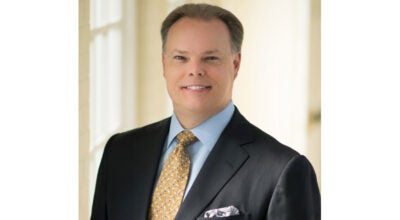Who deserves a statue?
Published 11:57 am Wednesday, June 10, 2020
|
Getting your Trinity Audio player ready...
|
By Nathan Decker
“We may have all come on different ships, but we are all in the same boat now.”
-Martin Luther King, Jr.
As human beings, we are fond of erecting statues to express our admiration and worship of heroes. Those in power raise up images which evoke who we are or hope to be. Ironically, who we were often isn’t who we become. Roman Emperors were notorious for knocking down previous ‘bad’ emperors statues. Egyptian pharaohs may have robbed previous rulers’ tombs to fund their own pyramids. Russians celebrated the fall of communism by not only tearing down statues but also renaming Stalingrad to Volgograd and returning Leningrad to St. Petersburg.
There is an old adage that says, “Those who do not study history are doomed to repeat it.” Another should be added: “Those who do not continually revisit their understanding of history will only repeat it.” We are in a revolutionary revisiting of our history. Stories that were hushed and silenced are now being brought to the forefront. We as a nation have the opportunity to move forward into conversations about how we see one another, how we include each other’s story, and how we tell our collective story.
One of the hardest lessons is the reality that all of our heroes don’t deserve statues. Robert E. Lee is seen by many as the gentleman soldier riding upon Traveller in a perfectly prepared uniform. But he was also a man who made the choice to fight to protect the institution of slavery in Virginia.
All heroes have flaws. When we deny them, call them fake news, or protect our children from hearing about them we promote ignorance. My own personal hero, Martin Luther King, Jr., was a great preacher and leader in the Civil Rights movement that led us to integration in our nation. Imagine my shock when I learned he was also a womanizer who had extramarital affairs. All heroes have flaws.
When marble or metals have flaws, those are the places they break. The Liberty Bell’s crack, the armless Venus De Milo, or Da Vinci’s “Last Supper” rotting because it was painted from egg tempera are examples of such flaws. When we see the flaws of our heroes sometimes it causes us to remove them from their high and lofty place. Other times we learn to embrace them as a way of keeping us humble in the knowledge that they too struggled. The choice to remove or lift up often reflects more about us and our context than it does upon the heroes we discuss. And that is a good thing.
History is not meant to be a statue. History is the continued conversation of who we were, who we are, and who we hope to be. Perhaps this is why the Lord God decreed that we shouldn’t make graven images to worship. The ideals of love, liberty, freedom, equality, and faith are too grand for a fresco. If we take advantage of this unique time of reflection to listen, acknowledge, and hear one another — we will be better for it. Listen in love. After all, it’s what Jesus would do.
Ozymandias
By Percy Shelley
I met a traveller from an antique land,
Who said — “Two vast and trunkless legs of stone
Stand in the desert. . . . Near them, on the sand,
Half sunk a shattered visage lies, whose frown,
And wrinkled lip, and sneer of cold command,
Tell that its sculptor well those passions read
Which yet survive, stamped on these lifeless things,
The hand that mocked them, and the heart that fed;
And on the pedestal, these words appear:
My name is Ozymandias, King of Kings;
Look on my Works, ye Mighty, and despair!
Nothing beside remains. Round the decay
Of that colossal Wreck, boundless and bare
The lone and level sands stretch far away.”
NATHAN DECKER is the pastor of High Street United Methodist Church.





